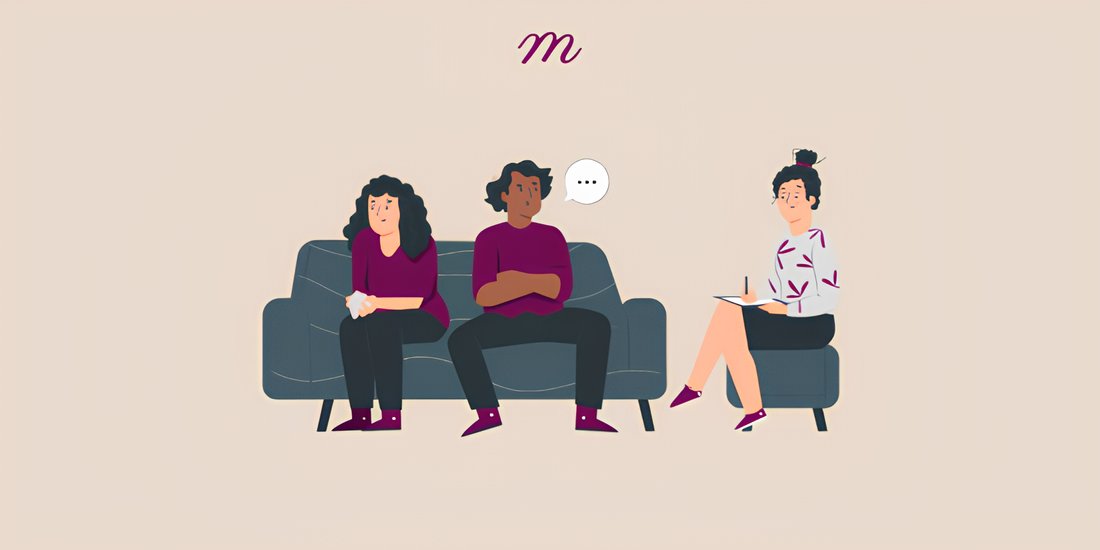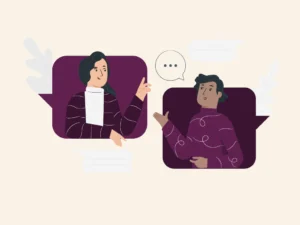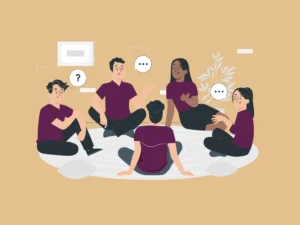Empathy in counselling is often confused with related but distinct concepts such as sympathy, compassion, or emotional validation. The American Psychological Association defines empathy as the ability to understand another person’s thoughts, feelings, and perceptions from their perspective, but this definition can fall short in a therapeutic context.
From personal experience, I have come to see empathy not as “feeling for” a client, but as an ongoing effort to step into their world, while still holding onto the awareness that it is not mine. Carl Rogers captured this beautifully with the idea of entering the client’s world “as if it were your own, without ever losing the ‘as if’ quality.”
I remember struggling with this nuance early in my career. I used to work at a rehabilitation center for children, and many of their life experiences (example – violence, abandonment, systemic neglect, etc.) were so foreign to me that I found it hard to connect at first. But I noticed how my presence changed when I stopped trying to “get it” intellectually and instead just stayed with them emotionally. That shift made a huge difference. In places like these, where children have been judged and pathologized all their lives, unconditional positive regard and real empathy become lifelines.
Empathy in counselling includes:
- Affective resonance – Feeling alongside the client.
- Cognitive empathy – Understanding the client’s narrative and worldview.
- Embodied presence – Being attuned nonverbally and emotionally.
- Contextual sensitivity – Understanding how culture, trauma, and identity shape experience.
Foundation of Good Therapy
Empathy in counselling is widely seen as a foundation of good therapy, but I have often found it as one of the most oversimplified and misunderstood parts of our work. It tends to get reduced to techniques like “active listening” or “naming emotions”, both of which are helpful, but only scratching the surface. True empathy, at least in my experience, is much deeper and far more relational.
Over the years, I have come to see empathy less as a skill to be applied and more as a way of being. It is about how I enter the space with a client—not just what I say, but how fully I’m present. Some of my biggest lessons in empathy didn’t come from lectures or supervision. They came from quietly witnessing clients whose realities are entirely different from mine, and staying with them, without needing to fix or analyze.
Empathy, Sympathy, Pity, and Compassion
Empathy, sympathy, pity, and compassion are all ways we react when we see someone suffering, but they are different in how deeply we feel and how they shape our connection with others. Empathy is when we truly feel alongside someone, understanding their experience without losing ourselves in it. It helps build a strong, shared connection. Sympathy, however, is more about feeling sorry for someone, but often from a distance, which can create a barrier between us. Pity tends to come from a place of looking down on others, which can make them feel less than or powerless. Compassion is a mix of empathy’s emotional connection and a desire to help ease the person’s pain, creating a supportive and action-oriented bond.
Knowing the differences between these emotions is important in therapy. It helps ensure that the therapist is truly connecting with the client, without unintentionally making them feel isolated or inferior.
For starters, here is Dr. Brené Brown’s, take on empathy. She illustrates the profound difference between empathy and sympathy. Brown emphasizes that genuine empathic connection requires us to be brave enough to connect with our own emotions, allowing us to truly be present with others in their pain. She states, “Empathy fuels connection. Sympathy drives disconnection.”
Barrett-Lennard’s Conditions of Empathy
Barrett-Lennard’s model offers a powerful expansion of how we understand empathy—not just as a feeling or technique, but as a relational and phasic process. He outlines three core phases that together form a complete empathic interaction:
- Empathic Resonance – The listener receives and resonates with the client’s emotional and experiential world.
- Expressed Empathy – The counselor communicates this understanding outwardly.
- Received Empathy – The client feels and recognizes that they’ve been understood.
What’s particularly compelling in his updated thinking is the notion that empathy is not limited to individual experience—it can also be directed toward relationship systems. That means we aren’t just empathising with a person’s inner world, but also with the emotional tone of their relationships, families, or communities, which can take on a “living whole” quality. I’ve felt this deeply in my work with children at a rehabilitation center, where the unspoken pain often resided not just in the child, but in the fractured parent-child dynamics or in the loss of a larger sense of belonging.
This helped me recognise that sometimes my clients weren’t just looking for empathy for their “I” experience—but also for the “we” experience. When a child shared how they felt safest with their sibling during family fights, it wasn’t just their personal fear that I needed to attune to, it was the emotional rhythm of that sibling bond, a small unit of safety they clung to.
Why Empathy Matters in Counselling
Empathy in counselling isn’t a “nice to have”—it’s the very foundation of therapeutic effectiveness. It anchors a therapeutic relationship, especially with clients who’ve experienced chronic invalidation or marginalisation.
In the rehab centre, many children came in expecting to be punished or fixed. It took weeks, sometimes months of consistently showing up with empathy before they began to open up. I remember one child who had been labeled “uncooperative” by multiple providers. But when I simply sat with him, letting him play in silence, he eventually whispered, “You’re not scared of me?” That’s when I knew empathy had done something no intervention had yet achieved.
Practical Ways to Cultivate Deeper Empathy
1. Active and Embodied Listening
Beyond paraphrasing, I focus on how I physically hold space, like – softening my body language, modulating my tone, mirroring emotions subtly. Sometimes just slowing down my speech allows a grieving client to stay with their pain a little longer instead of rushing into solutions.
2. Emotional Validation
I’ve learned to say things like, “Given what you’ve been through, it makes sense,” even when I don’t agree with the choices a client has made. This opens doors. In my experience, clients don’t need agreement, they need to feel they’re not alone in their emotional truth.
3. Using Open-Ended and Depth-Oriented Questions
Questions like “What did you need in that moment?” or “Where do you feel that in your body?” have consistently led to deeper exploration than analytical “why” questions. I often catch myself and rephrase in real time—it’s a practice.
Empathy and Cultural Competence
As an Indian counsellor, I’ve worked with clients across cultures, identities, and experiences. I’ve learned that it’s okay to say, “I might not fully understand what that’s like for you, but I want to.” This humility is often more powerful than assumed knowledge.
One moment that stands out is from a session with a German client who frequently spoke about how the gloomy weather impacted her mood. Initially, I dismissed it internally, thinking, “How much can weather really matter?” Coming from a place where weather is rarely linked to emotional states in therapy, I almost missed a crucial cultural and environmental cue. But as she continued, I began to understand how the long winters and lack of sunlight in her context deeply affected her energy, hopefulness, and daily functioning. I had to sit with my own bias and instead attune to the emotional and cultural truth of her experience. That session reminded me that empathy across cultures isn’t just about listening. It’s about learning to see the significance of things we might never have thought mattered.
Empathy, in that sense, becomes a posture of cultural humility. It’s not about getting it “right,” but about being willing to be wrong, to repair, and to keep learning. In cross-cultural work, this humility is not optional, it’s essential. Without it, empathy risks becoming performative rather than truly connective.
Common Challenges in Practicing Empathy
1. Managing Personal Biases
I’ve caught myself over-identifying with clients who remind me of my own past and also struggling to connect with those whose values clashed with mine. Supervision has been my lifeline in untangling these reactions.
2. Emotional Fatigue and Empathy Burnout
Early in my career, I confused empathy with emotional absorption. I’d carry clients’ pain long after sessions ended. Over time, I learned to ground myself through mindfulness, ritual, and community—small acts that make a big difference.
3. Misattunement and Repair
I’ve had sessions where I missed the mark. Once, a client became quiet after I said something meant to be validating. I paused and asked, “Did I get that wrong?” and the repair that followed felt even more connecting than the session had up to that point.
Can Empathy Be Measured?
Empathy is felt more than seen but feedback helps. I regularly check in with clients: “Was that helpful?” or “Did that feel like what you needed to hear?” I also use journaling and supervision to reflect on my empathic stance. It’s not always easy, but it keeps me honest.
Conclusion
Empathy in counselling is not a checkbox, it’s a muscle, one I stretch and strain and strengthen daily. Some days I get it wrong. Some days I surprise myself. But every day, I try to meet clients where they are, even when it’s uncomfortable or unfamiliar.
If you’re a counsellor reading this, I invite you to stay curious. Stay humble. Let empathy in your practice be alive, responsive, and always evolving.
Resources
References
Barrett-Lennard, G. T. (1993). The phases and focus of empathy. British Journal of Medical Psychology, 66(1), 3–14.
Dauchess, A. (2025, January 9). The Role of Empathy in Effective Counseling: Techniques for Building Trust and Understanding. Marymount University.
Kapoor, S. (2022). THE SIGNIFICANCE OF EMPATHY IN COUNSELLING.
Sutton, J. (2017, August 8). Understanding Empathy: What is it and Why is it Important in Counseling. PositivePsychology.com.
Why other mental health professionals love Mentalyc

“It’s really giving me some good confidence … and areas of improvement to see nuances I didn’t see before.”

“It keeps me on a level of assessment about the relationship that has a little bit more objectivity … helps keep me grounded.”

“Reading transcripts helps me tighten up and come across more the way I want to present myself to clients … it’s helped me improve and keep getting better.”
Licensed Marriage and Family Therapist

“Using Alliance Genie has really improved my notes … It tells me what I’m doing and gives me an approach of what’s next.”







